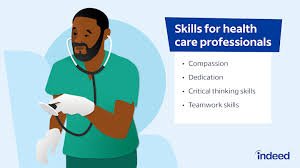Introduction
Hospitals are not just buildings with beds and machines. They are complex systems run by dedicated healthcare professionals who work day and night to take care of patients. Every person in a hospital—from the doctor to the cleaner—plays an important role in keeping the hospital running smoothly and patients safe.
In this article, we will explain the main roles of healthcare professionals in a hospital, what they do, and how they work together as a team to provide the best care.
1. Doctors
Role and Responsibilities:
Doctors are responsible for diagnosing illnesses, prescribing treatments, and performing surgeries. They are highly trained medical professionals who specialize in different areas, such as:
- General Practitioners (GPs) – Treat common illnesses and refer patients to specialists.
- Surgeons – Perform operations.
- Cardiologists – Focus on heart-related conditions.
- Pediatricians – Specialize in children’s health.
- Emergency Physicians – Treat patients in critical condition in the ER.
Doctors work closely with nurses and other staff to manage patient care plans.
2. Nurses
Role and Responsibilities:
Nurses are the backbone of any hospital. They provide round-the-clock care to patients, monitor vital signs, administer medication, and assist doctors during treatments and surgeries.
Types of nurses include:
- Registered Nurses (RNs) – Handle general patient care.
- Nurse Practitioners (NPs) – Can diagnose and prescribe under supervision.
- ICU Nurses – Work in critical care units.
- Surgical Nurses – Assist in operating rooms.
Nurses are often the first people patients see and trust for emotional support and physical care.
3. Pharmacists
Role and Responsibilities:
Pharmacists are responsible for preparing and dispensing medication prescribed by doctors. They ensure the right dose is given and check for drug interactions.
In hospitals, they:
- Advise doctors on drug choices.
- Monitor patient medication plans.
- Educate staff on safe drug usage.
Hospital pharmacists play a key role in reducing medical errors and improving patient safety.
4. Laboratory Technicians
Role and Responsibilities:
Lab technicians perform tests on blood, urine, and other samples to help doctors diagnose diseases. Without lab reports, many illnesses can go undetected.
They work in areas like:
- Pathology
- Hematology (blood tests)
- Microbiology (infection testing)
- Biochemistry (organ function testing)
Lab results help guide treatment decisions and monitor recovery.
5. Radiologists and Imaging Technicians
Role and Responsibilities:
Radiologists are doctors who interpret medical images like X-rays, CT scans, MRIs, and ultrasounds. Imaging technicians or radiographers operate the machines that capture these images.
Their work helps detect:
- Fractures
- Tumors
- Internal injuries
- Organ problems
Radiology is vital for accurate diagnosis and treatment planning.
6. Physical Therapists
Role and Responsibilities:
Physical therapists help patients recover from injuries, surgeries, or illnesses by improving their mobility and strength. They design customized exercise programs.
Common cases they handle include:
- Stroke recovery
- Post-surgery rehab
- Sports injuries
- Chronic pain
Their goal is to help patients regain independence and avoid long-term disabilities.
7. Occupational Therapists
Role and Responsibilities:
These therapists help patients return to daily activities like bathing, dressing, or cooking after illness or injury. They often work with patients who have:
- Physical disabilities
- Mental health issues
- Developmental conditions
Occupational therapists focus on improving quality of life and daily functionality.
8. Respiratory Therapists
Role and Responsibilities:
These professionals assist patients who have trouble breathing. They manage ventilators, provide oxygen therapy, and monitor lung function.
They are essential in:
- ICUs
- Emergency rooms
- COVID-19 units
- Pediatric wards
Respiratory therapists ensure patients get enough oxygen and manage breathing-related emergencies.
9. Dietitians and Nutritionists
Role and Responsibilities:
Hospital dietitians develop personalized meal plans for patients based on their health conditions. They help manage:
- Diabetes
- Heart disease
- Malnutrition
- Post-surgery recovery
Proper nutrition supports faster healing and better outcomes.
10. Hospital Administrators
Role and Responsibilities:
While not directly involved in patient care, administrators ensure that the hospital runs smoothly. They manage:
- Staff schedules
- Budgets
- Equipment purchases
- Compliance with health laws
Good administration means better care and shorter waiting times for patients.
11. Medical Assistants and Support Staff
Role and Responsibilities:
These professionals assist doctors and nurses with everyday tasks, such as:
- Checking vital signs
- Recording patient information
- Assisting with minor procedures
They help reduce the workload of medical staff and improve patient experience.
12. Cleaning and Sanitation Workers
Role and Responsibilities:
Sanitation workers keep the hospital environment clean and infection-free. Their work includes:
- Cleaning patient rooms
- Disinfecting equipment
- Removing medical waste
They are essential for infection control and hospital hygiene.
How All Professionals Work Together
Hospitals work like a team. Each professional, from the top surgeon to the cleaning staff, plays a unique role in saving lives. Coordination and communication between departments are crucial for:
- Accurate diagnosis
- Timely treatment
- Safe surgery
- Proper recovery
Why Understanding These Roles Matters
If you or your family member is admitted to a hospital, knowing who does what helps you:
- Ask the right questions
- Understand the treatment process
- Know whom to contact for specific concerns
It also gives you confidence in the care you receive.
Conclusion
Hospitals are made up of many professionals, each with special skills and responsibilities. Together, they form a team dedicated to healing and saving lives.
From doctors and nurses to dietitians and technicians, every role is important. Understanding these roles can help patients feel more informed and involved in their healthcare journey.
